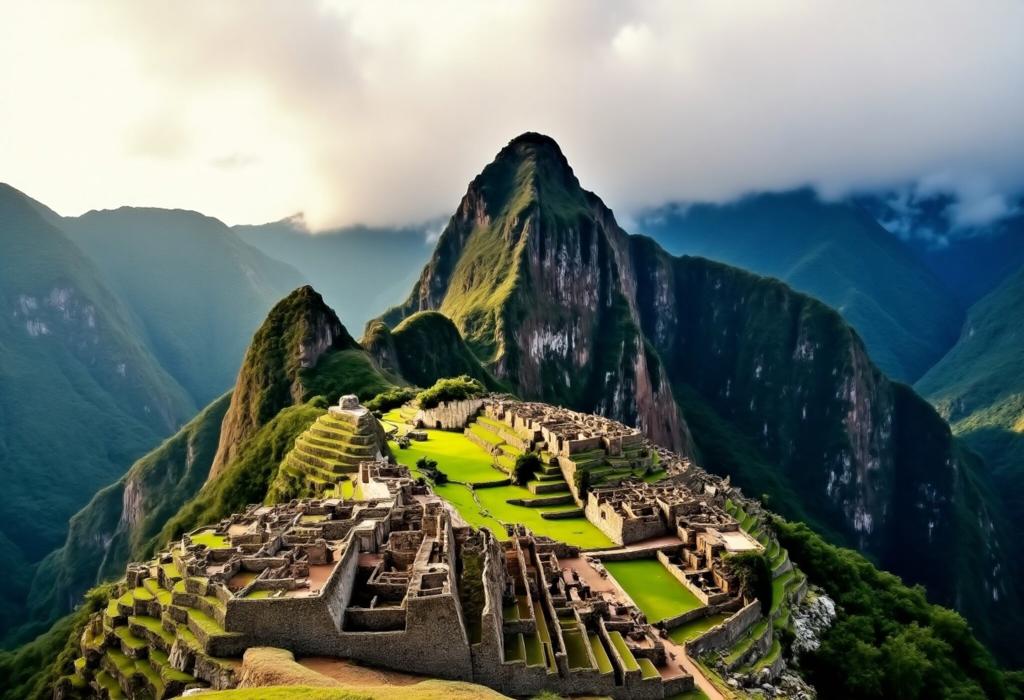For more details on this content, please review the step-by-step guide and frequently asked questions.
The Wonders of Machu Picchu: A Historical Dream

Step-by-Step Guide
Understanding Machu Picchu's History
Begin your exploration by learning about the history of Machu Picchu. This ancient citadel, built during the reign of the Inca emperor Pachacuti in the 15th century, served as a royal estate and religious site. It was abandoned in the 16th century after the Spanish conquest and remained largely unknown until its rediscovery by American historian Hiram Bingham in 1911.
Locating Machu Picchu
Geographically, Machu Picchu is located in the Andes Mountains of Peru, at an altitude of about 2,430 meters (7,970 feet) above sea level. It lies 112 kilometers (70 miles) northwest of Cuzco, the former capital of the Inca Empire. Understanding the geographical context helps in appreciating its strategic importance.
Planning Your Visit
To visit Machu Picchu, determine the best time of year for your trip. The dry season, from May to October, is generally preferred, although the peak season can be crowded. Book accommodation in advance and secure your entry tickets, as they are often limited.
Getting to Machu Picchu
Travel to Machu Picchu typically involves a train journey from Cuzco or Ollantaytambo to Aguas Calientes, the nearby town. Upon arrival in Aguas Calientes, take a bus or hike the steep trail up to the citadel. Familiarize yourself with the transportation options and schedules in advance.
Exploring the Citadel
Once at Machu Picchu, take your time exploring its numerous structures, including temples, terraces, and agricultural areas. Key highlights include the Temple of the Sun, the Intihuatana stone (hitching post of the sun), and the Royal Tomb. Allow for guided tours for a richer understanding of its significance.
Understanding the Architecture
Machu Picchu showcases remarkable Incan architecture, characterized by precision-stonework, construction techniques, and terracing. Note the use of granite blocks, which were skillfully cut to fit together without mortar, demonstrating advanced engineering skills. Reflect on how the structure harmonizes with its natural surroundings.
Engaging with Incan Culture
Interact with local guides and communities to learn about the cultural practices of the Inca civilization. Understand their beliefs, traditions, and how Machu Picchu played a role in their society, including its religious and agricultural significance.
Appreciating the Flora and Fauna
Machu Picchu is situated in a rich biodiversity hotspot. Take time to appreciate the diverse flora and fauna that inhabit the area. Look out for unique plants and animals, including orchids and the Andean condor. Consider a guided nature walk to enhance your experience.
Taking Photos and Creating Memories
Capture the breathtaking views and unique landscapes that surround Machu Picchu. Map out specific viewpoints that offer stunning perspectives, particularly the iconic view from Huayna Picchu or the Sun Gate. Be respectful of the site and its rules regarding photography.
Leaving a Positive Impact
When visiting Machu Picchu, practice eco-friendly tourism. Respect the environment and the cultural heritage by adhering to designated paths, not littering, and supporting local businesses. Your conscious efforts will contribute to the preservation of this historical wonder.








